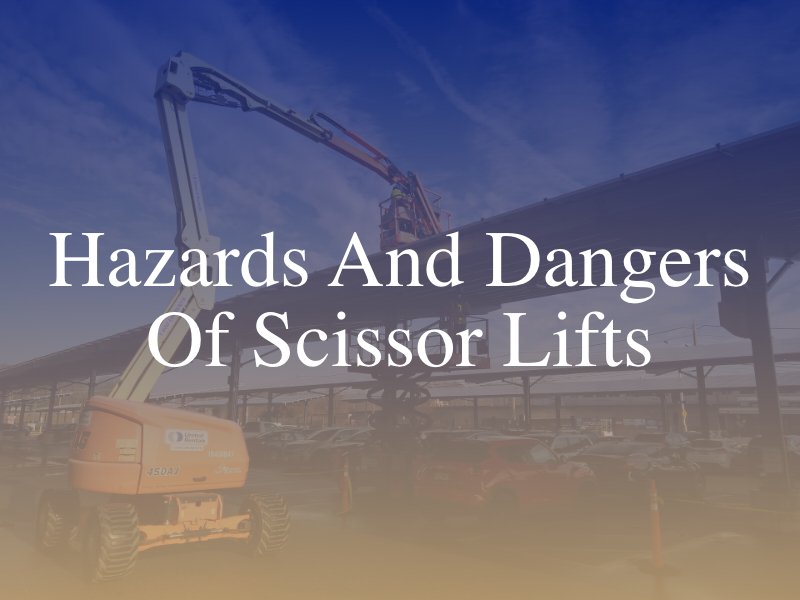
Hazards and Dangers of Scissor Lifts
Colburn Law
Posted in Blog,Safety Tips,Worksite Injury on February 20, 2023

Working in the construction industry can be rewarding, but it also involves a significant amount of risk. One of the most common pieces of equipment used in construction is the scissor lift, which allows workers to work at heights safely. However, the use of scissor lifts can also be hazardous, and accidents can result in serious injuries or even fatalities.
What Is a Scissor Lift?
A scissor lift is a type of mobile elevated work platform that is commonly used in construction and maintenance work. It can be raised and lowered vertically using a scissor mechanism, which provides workers with access to high areas such as building exteriors, ceilings, and roofs. They are also used to transport heavy equipment and materials to high levels.
Scissor lifts can vary in size and shape, from small indoor models popular for warehouse use to large outdoor models that are used on construction sites. While these platforms are designed to be stable and secure, they can be dangerous if they are not used properly.
What Are the Common Causes of Scissor Lift Accidents?
A scissor lift accident can lead to serious and sometimes life-threatening injuries, like broken bones, brain damage, spinal cord injuries, and internal bleeding. Several factors can contribute to these incidents, such as:
- Tip-Overs: One of the most common causes of scissor lift accidents is tip-overs. This can happen if the scissor lift is not set up properly, if the ground is not level, or if the lift is overloaded. In these situations, the machine can tip over and fall, injuring any worker who is using it.
- Electrocution: Scissor lifts can come into contact with electrical wires, which can cause electrocution. If the lift is not properly insulated, is placed too close to an electrical line, or if the worker is not trained to recognize electrical hazards, serious injuries, and even death can occur.
- Falls: Workers can fall from scissor lifts if the machine is not properly secured or if they lean over the guardrails. Falls can also occur if the lift is not stable or if the worker is not wearing proper protective gear. Lack of maintenance, machine defects, and many other factors may also lead to a fall.
- Entrapment: Workers can become trapped or pinched between the scissor lift and other objects, such as walls or equipment. This risk of entrapment increases if the worker is not paying attention to his or her surroundings or if the lift is not positioned correctly.
What to Do If You Are Injured in a Scissor Lift Accident
Scissor lift accidents can be scary and life-altering. You could sustain serious injuries that require expensive medical care. You may be unable to work for weeks or become permanently disabled. The pain and suffering associated with these accidents can be severe.
If you were injured by one of these devices, you may be eligible for workers’ compensation benefits or a personal injury claim, depending on the circumstances of your accident. In these situations, it is important to discuss your legal options with a Washington construction accident attorney.
A lawyer can investigate your case, identify your legal options, and help you recover the compensation that you deserve. After receiving medical care for your injuries, contact an attorney to discuss your next steps.



